
Ferrari-based Lancia Stratos recreation
Story and Photos by By Sudhir “Banzai” Matai
The Lancia Stratos is one of the best-known rally cars of all time. It was famously conceived as a competition car first, rather than being a road car converted for racing duty. This built-for-purpose approach would account for its multiple titles. With a short wheelbase and a midmounted 2.4-liter V6 from the Ferrari Dino, the car’s agile nature made it quick on the torturous rally stages of the World Rally Championship, which it won in 1974, 1975 and 1976.
As a young rally fan, Michael Stoschek longed for the car that he watched compete during his formative years. When the German entrepreneur was old enough, he bought himself an original Lancia Stratos (which he still owns), but that car’s value continually rises and its age makes it less than ideal for regular usage.
So Michael decided to create a modern-day version of the Stratos and turned to famed Italian automotive consultancy Pininfarina. After several years and bucket loads of cash spent on the project, Michael finally had the car he lusted after as a youth: a modern-day Stratos.
Fast-forward a few years, and Michael had plenty of time in the driver seat, enjoying and racing his one-off creation. Demand from other quarters led him to grant production rights for the new Stratos to a small-scale Italian firm called Manifattura Automobili Torino (MAT). Those familiar with the exotic creations of Scuderia Cameron Glickenhaus (SCG) will be interested to know that its cars were built by MAT as well.
With all the hard lessons learned on Michael’s car, the creation of a limited run (just 25) of the new Stratos units was a no-brainer. MAT showed its very first creation to the public at the 2018 Geneva Motor Show and opened up its order book, and buyers started to line up pretty quickly.
MAT starts with a Ferrari F430 (usually supplied by the client), using either the street model or the track-focused Scuderia version. At MAT’s Turin, Italy, headquarters, the company starts by stripping away all the interior trim, as well as all the body panels and roof panel, leaving a bare-bones platform that includes the shock towers.
At this point, what’s left of the car is mounted into a jig, and the company removes 8 inches from the wheelbase, reducing it to 94.5 inches, and then the two halves are joined back together. MAT welds an integrated roll cage onto the new structure to compensate for the removal of the roof section. The cage is fashioned out of FIA-spec FE45 steel that has a tube diameter of 1.5 inches with a wall thickness of 0.1 inches. Another area of additional stiffening results from two braces bolted between the rear bulkhead and shock towers. The net result is a car that is more rigid torsionally than its donor vehicle.
While this extensive rebuild of the car’s underpinnings is taking place, MAT starts work on the naturally aspirated 4.3-liter V8. As noted above, the original Stratos was also powered by a Ferrari-sourced engine, albeit a V6. At a client’s request, the motor can be overhauled and MAT adds its own touches to improve its character and output. A reprogrammed Bosch ECU, along with a new intake and exhaust system from Capristo, liberate quite a few more ponies from the high-revving mill — that is now good for 540 bhp (up from 483 bhp) at 8,200 rpm.
Swapping out the standard engine’s exhaust for a freer-flowing system brings with it a unique engine note. Gone is the melodious tune sung by Ferrari’s bent eight; in its place is a hard-edge, guttural growl that’s in line with the car’s rally roots.
Selecting a transmission is up to the buyer, with most purists opting for the open-gated six-speed manual. There’s an automated manual version available as well, which is an F1 transmission with an electrohydraulic actuated setup and paddle shifters. Owners can also choose whether to have left- or right-hand drive, so cars can be built either for the U.S. or for Australia, South Africa and Japan.
Back in MAT’s body shop, the heavily modified platform is fitted with new suspension bushings on the double-wishbone setup, as well as Bilstein springs and damper units. The latter have been tuned to handle a car that is somewhat lighter (up to 200 pounds, depending on options) than a stock F430. When it hits the ground, the MAT Stratos tips the scale at 2,740 pounds with a rear-biased mass distribution of 44/56.
MAT also replaces the wheel hubs with race-style, center-lock items to accommodate the bespoke wheels produced by Fondmetal. The new alloys measure 19 x 9 on the front axle and 19 x 11 on the rear. These are shod with 265/30 and 305/30 Michelin Pilot Sport Cup 2 semislick rubber.
Inside those wheels is a race-derived braking system. The Brembo brakes consist of 398 mm ceramic discs and six-piston calipers on the front wheels, with 350 mm discs clamped by four-piston calipers at the rear.
Once the underpinnings have been fitted with cooling and electrical systems, it is all covered up with a tailor-made suit of carbon fiber panels. The shape, while not identical, is meant to evoke the rakish lines of the original Lancia Stratos. One major difference is the lack of pop-up headlamps on the newer car. However, the wraparound front windscreen, wedgelike profile, circular taillamps and flicked-up rear spoiler are almost direct carryovers. View the two cars side by side and the DNA is undeniable.
Clients can pick and choose exterior color options, as well as interior trim. Many opt for the rally fog lamps, as seen on the company’s blue demonstrator, and one new owner went the whole hog and had his car painted in rally-style Alitalia livery.
Some owners choose to have the original Ferrari seats recovered, while others prefer full race buckets with multipoint harnesses. Either way, the new car harkens back very closely to the original in the cabin. The original Stratos famously had door pockets large enough to hold a helmet, as the cabin was too small to place them anywhere else, and so too does the recreated version.
The gauge cluster isn’t some digital data logger, but rather has a full suite of analog dials — way cool. MAT retains the F430’s steering wheel and Ferrari’s manettino dial, which allows the driver a quick and simple adjustment of the electronics governing suspension settings, traction control, electronic differential and change speed of electronic gearbox.
As far as reincarnations go, the MAT-built Stratos really turns the game upside down. Restomods are typically old cars with modern fittings and technology. In contrast, MAT has taken a new car and given it the appearance of a sky-high rally classic.
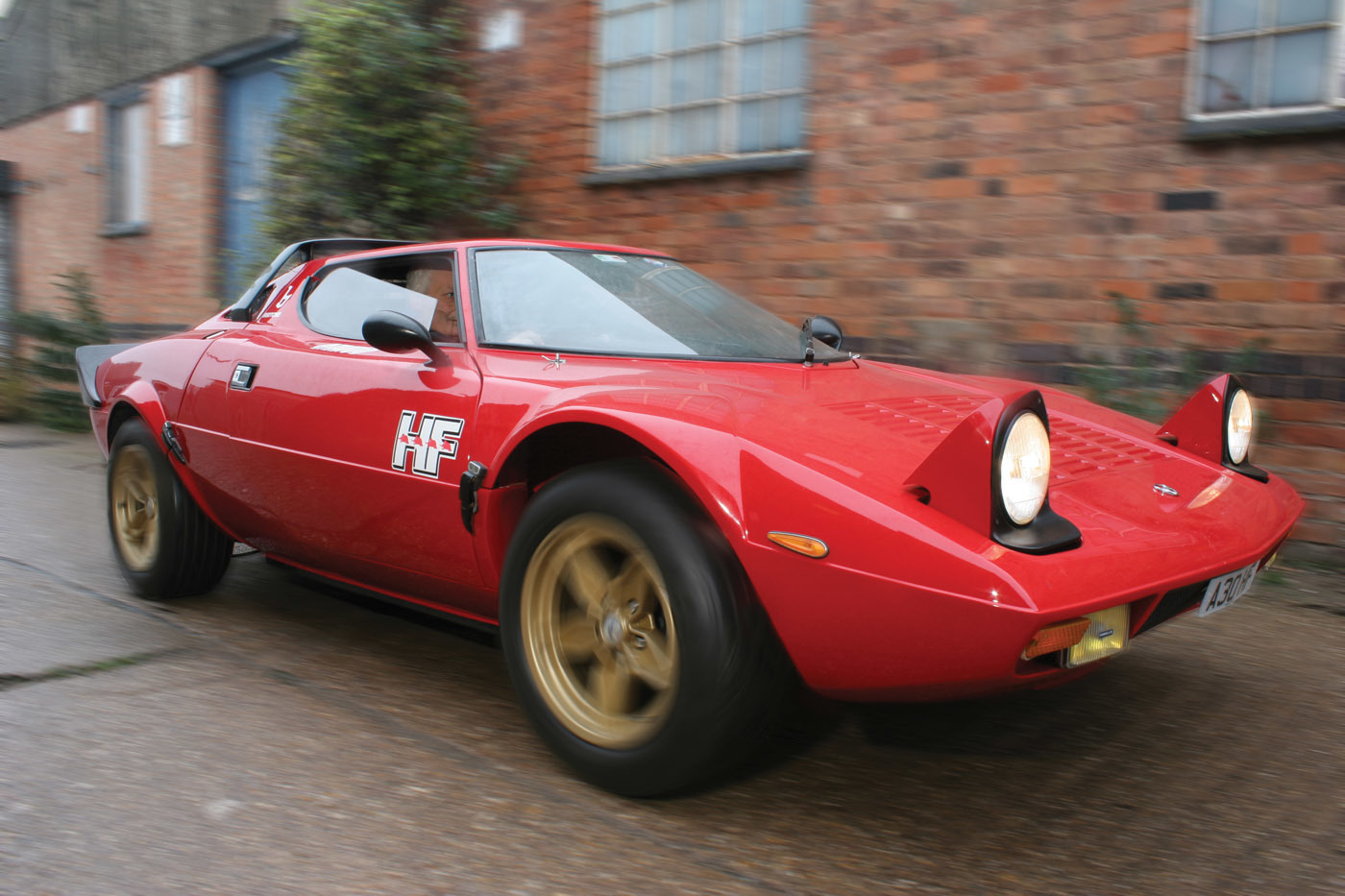
Hawk’s high-flying Stratos - By Rob Hawkins
With an original Lancia Stratos selling for more than a half-million dollars, many people turn to the replica market to fulfill their classic rally dreams. Stratos replicas have been available since the 1980s, and the longest-established manufacturer is arguably Hawk Cars in the U.K. Hawk has developed a host of authentic parts and sourced components that were once available from donor cars but have now become scarce or expensive.
Most Stratos replicas are based around Italian donor car components like the Lancia Beta, and Hawk’s range of replicas follows this rule. The Alfa Romeo 164 can be used for the engine, gearbox, management system, front brake discs and calipers for the rear. The front stub axles are sourced from the Fiat 132 or FSO Polonez.
The rear suspension makes use of front struts and top mounts from the Lancia Beta, although GAZ struts are now available along with alloy solid mounts manufactured by Hawk. Other donor components are sourced from the Fiat X1/9, along with the 124 Sport and 850 models.
Hawk has developed many of its own components for its Stratos replica. Aside from the space-frame chassis, which was created by the manufacturer, the front suspension uses double wishbones with outboard coilovers and an anti-roll bar. At the rear, the struts are attached to Hawk’s own uprights, hubs and track control arms.
Hawk’s Stratos replicas are known as the HF range and denoted according to engine size. HF2000 designates a 2-liter Lancia engine, while HF3000 is used for the 3-liter V6, among others. There are other variations based on road-going Stradale bodywork, wide arched Group 4 with a full bank of spotlights along the front of the bonnet (hood), and the even wider Giro d’Italia Group 5.
Hawk has done such an accurate job on its replica that owners of the genuine rally cars now buy spares from the company. At this point, sales of Hawk’s Stratos replica far exceed the number of original Lancia units built.
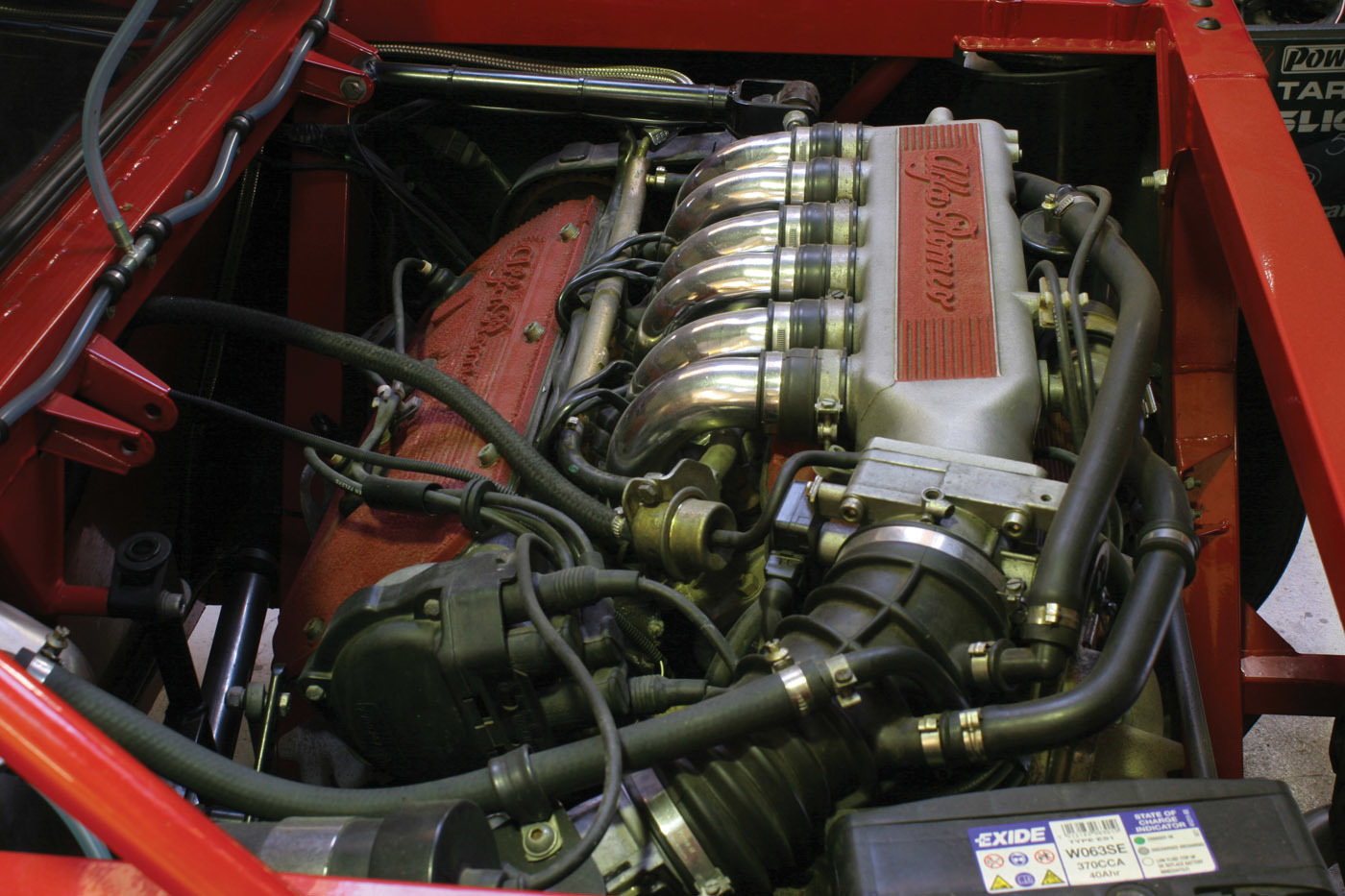

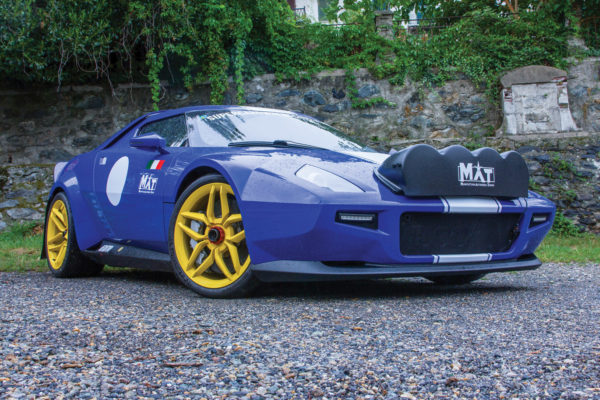
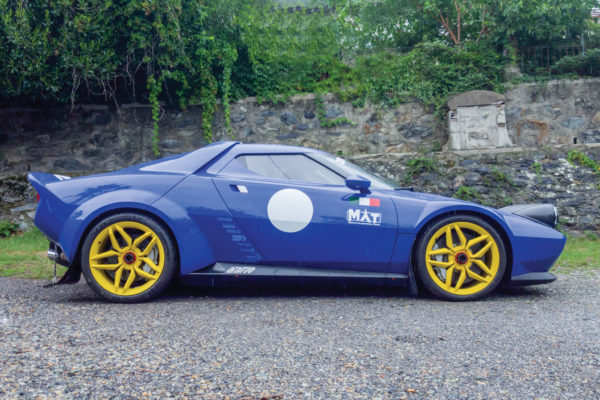
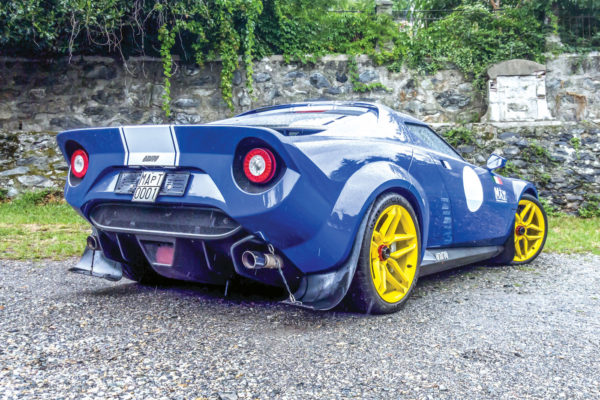
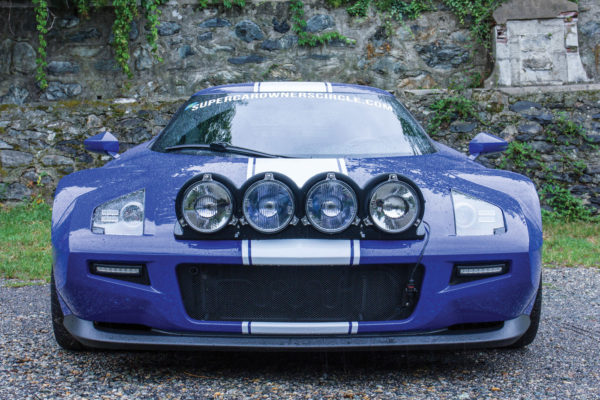
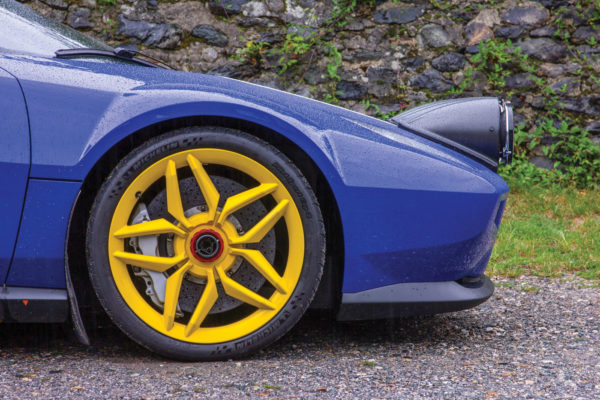
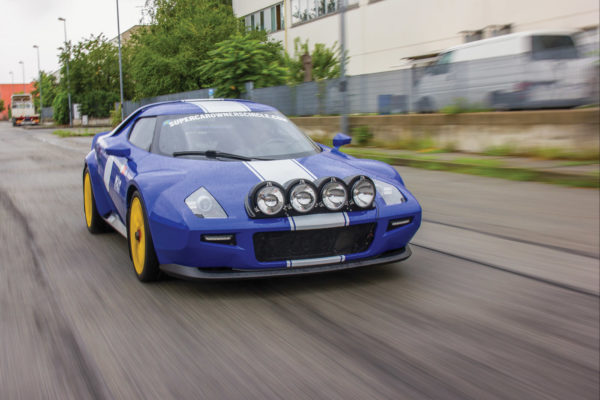
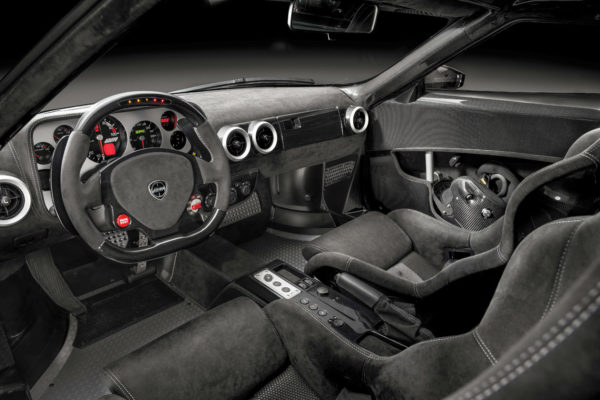
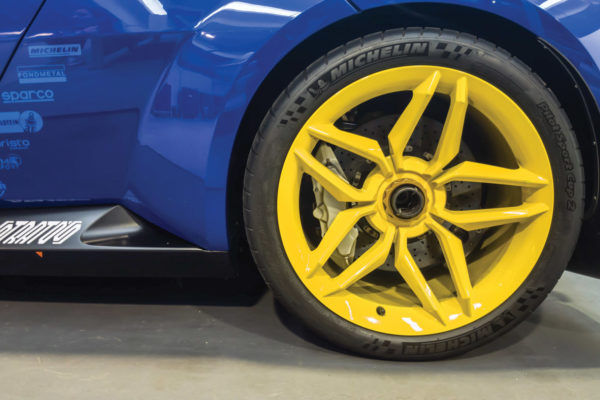
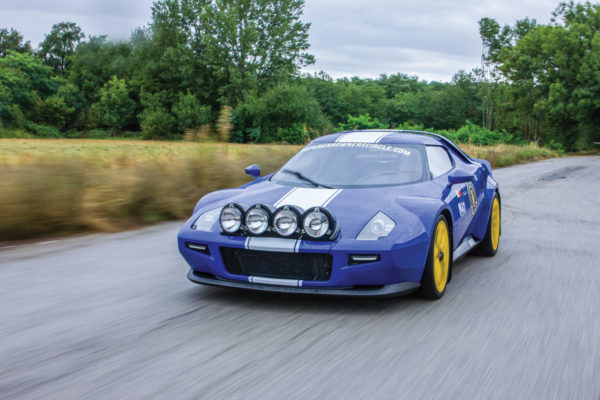
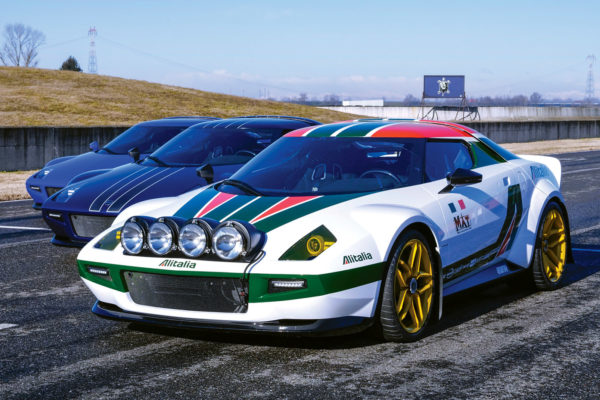
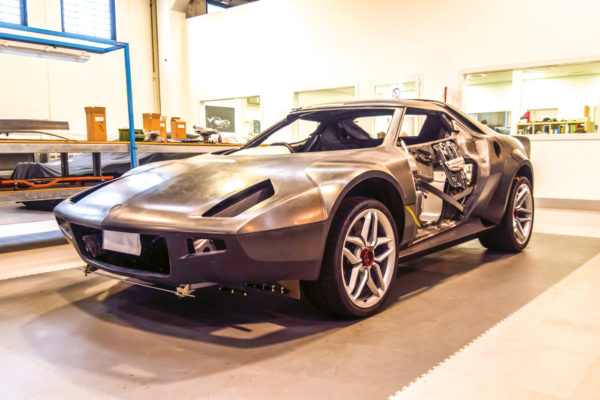
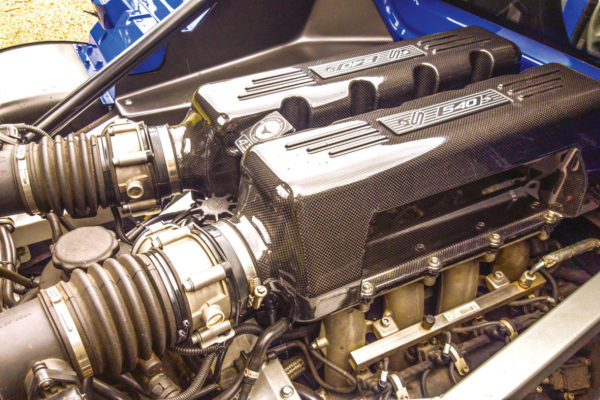
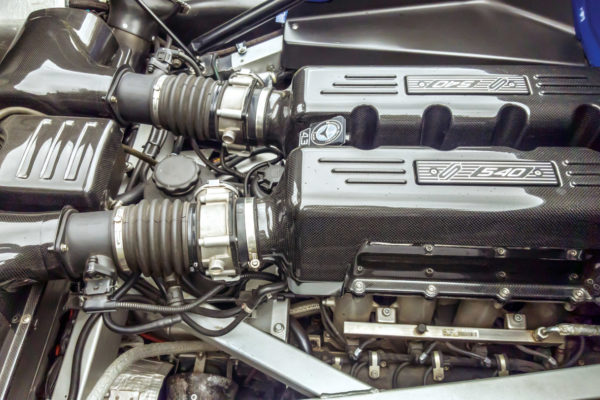
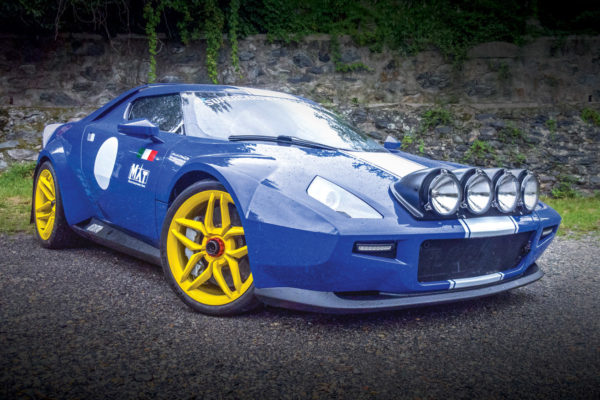
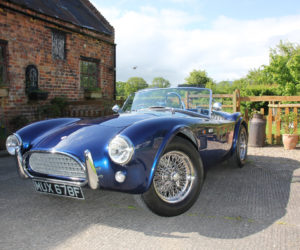
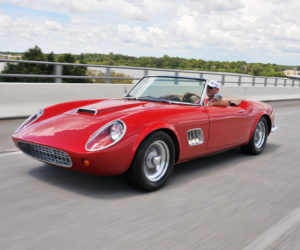

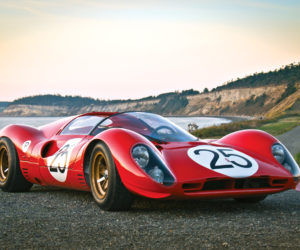
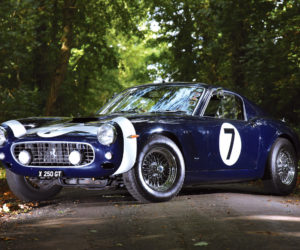
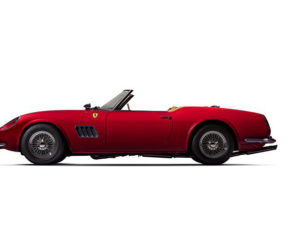




Comments for: Sky-High Stratos
comments powered by Disqus